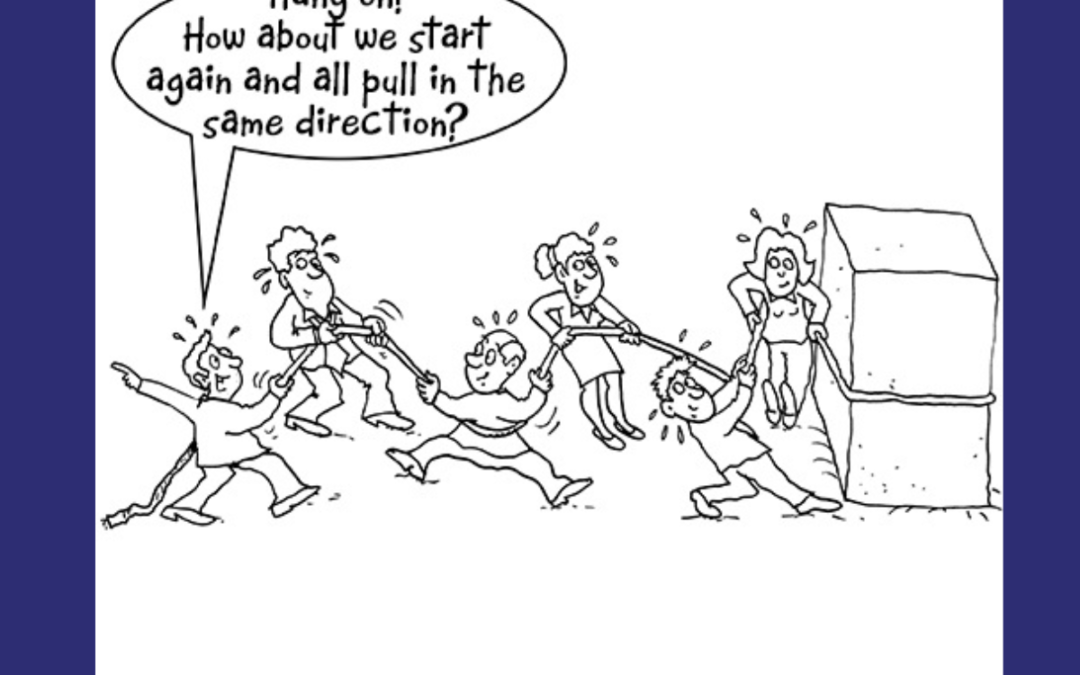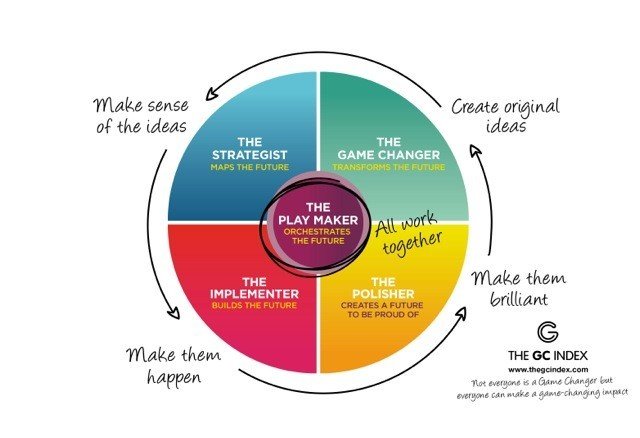
by Julia Felton | Apr 22, 2025
Are you a business leader feeling more overwhelmed now than ever—even after hiring a team? Do you find yourself becoming the bottleneck in your own business operations? If so, you’re not alone. Many fast-growing business leaders fall into this trap. But the good news is there’s a simple and effective model to help you escape it.
In this post, I want to introduce you to a game-changing productivity tool: the TOADD Model—an acronym for Train, Outsource, Automate, Delegate, and Discipline. This model will help you step out of the daily weeds of your business and lead more strategically. It’s time to unshackle yourself from the busy trap and unlock your team’s true potential.
Why Models Matter for Leaders
Before we dive into TOADD, let’s talk about the power of models. Models allow us to codify our genius—our intellectual property—in ways that are clear, repeatable, and easy for others to understand. That’s why I use models like the Unbridled Teamship Roadmap and my IMPACTFUL Leadership Traits framework. When you frame your leadership strategy using memorable acronyms or visual diagrams, your team is more likely to remember and apply what you teach them.
Now, let’s unpack the TOADD model and see how it can revolutionise your productivity.
T – Train: Short-Term Effort for Long-Term Freedom
Training team members may seem like a time drain, but it’s actually a smart long-term investment. One of the most common objections I hear is, “I don’t have time to train anyone.” But here’s the truth: every hour you invest in training could save you dozens of hours down the road.
💡 Action Step:
-
Choose one repetitive task you do weekly (e.g., social media posting, inbox management).
-
Use a screen recording tool like Loom or Zoom to document how you do it.
-
Share this with a team member and give them a chance to take it on.
If that task takes you an hour a week, you’re freeing up 52 hours a year just by training someone else to handle it.
O – Outsource: Tap into the Global Talent Pool
If you don’t have a team yet—or you need specialized support—consider outsourcing. The modern gig economy makes it easier than ever to find high-quality freelancers who can tackle just about any task.
From virtual assistants to graphic designers to funnel builders, the world is your oyster. You can even find affordable, highly skilled talent from countries like the Philippines, South Africa, and Nigeria.
💡 Action Step:
-
Write down 3 tasks you don’t enjoy or aren’t great at.
-
Browse platforms like Fiverr, Upwork, or PeoplePerHour to find help.
-
Test one freelancer with a small project and assess the results.
Outsourcing doesn’t have to be permanent—you can start small and scale as your needs grow.
A – Automate: Let Tech Do the Heavy Lifting
Technology is your silent teammate. You can now automate everything from lead generation to email marketing to appointment reminders. The time you save can be reinvested into high-impact strategy and innovation.
In my business, for example, I’ve automated my quiz funnel using tools like SCORE App, Zapier, and my CRM. Once someone completes the quiz, they automatically receive follow-up emails and resources—without me lifting a finger.
💡 Action Step:
-
Identify one manual task you repeat often (e.g., sending meeting reminders, client onboarding).
-
Explore automation tools like Zapier, Make.com (formerly Integromat), or CRMs with built-in workflows.
-
Set up a simple automation and monitor the impact.
Small automations can have massive ripple effects in freeing up your schedule.
D – Delegate: Empower Your Team to Lead
Delegation isn’t just a leadership skill—it’s a mindset shift. Many leaders hesitate to delegate because they believe “no one can do it like me.” But this mindset keeps you stuck and slows down your team.
Worse, you may be holding on to tasks you hate, mistakenly thinking no one else wants them either. In reality, those same tasks may be someone else’s zone of genius.
💡 Action Step:
-
Audit your daily tasks for a week in 15-minute increments.
-
Highlight tasks that could be handed off to someone else.
-
Ask your team members what they love doing—you might be surprised!
Then delegate accordingly and be available to coach and support them through the learning curve.
D – Discipline: The Glue That Holds It All Together
The final D stands for Discipline—both personal and team-wide. Discipline means following through on commitments, setting boundaries around your time, and holding team members accountable. Without discipline, all the training, outsourcing, automation, and delegation in the world won’t stick.
It also means staying consistent with feedback loops. When something doesn’t go as planned, don’t take the task back—coach your team through it.
💡 Action Step:
-
Review weekly: Are your systems and team operating as expected?
-
Reflect: Are you following through on your own priorities?
-
Reinforce: Are you holding space for feedback and continuous improvement?
Great businesses are built on consistent behaviours, not random bursts of energy.
Bonus Tip: Start by Tracking Your Time
If you’re not sure where to start, begin by tracking how you spend your time each day. Use a time tracker or simply jot down your tasks in 15-minute chunks. You’ll quickly see where your time is leaking—and where TOADD can help.
Final Thoughts: Productivity Is a Team Sport
The TOADD model isn’t just about getting more done—it’s about leading smarter. It’s about reclaiming your role as a visionary and empowering your team to step into theirs.
Here’s your TOADD recap:
-
T – Train others to take on repeatable tasks.
-
O – Outsource work you don’t need to do yourself.
-
A – Automate processes to save time and energy.
-
D – Delegate to unlock your team’s superpowers.
-
D – Discipline yourself and your team to follow through.
When you implement TOADD, you stop being the bottleneck and start becoming the catalyst for exponential growth. So, which letter are you going to start with this week?
Let’s Talk:
I’d love to hear from you—what’s one thing you’re going to Train, Outsource, Automate, Delegate, or Discipline this week? Drop me a message or tag me on LinkedIn!
Show Notes:
Here are the highlights from this episode:

by Julia Felton | May 7, 2024
Recently I led an open leadership development session for local business leaders with my horses and experienced first-hand the powerful impact of effective teamwork. Despite being strangers, the participants managed to guide a horse around an obstacle course by working together seamlessly. This made me wonder why teams in the workplace often underperform while a temporary group of people can excel.
In this podcast, I delve into the criticality of teamwork in our modern economy. The shift from industrial to service and information societies, coupled with the rate of change and explosion of knowledge, has made it impossible for individuals to keep pace alone. It’s evident that harnessing the power of teams gives companies a competitive edge.
All teams, at some point, struggle due to various factors, such as lack of direction or clear roles but what exactly constitutes an underperforming team? That was something I wanted to explore and I discovered that and under-perfoming team is one “that falls short of its goals or required performance level”. Therefore, constant assessment and feedback are crucial for improvement.
In 1959 Frederick Herzberg conducted some ground-breaking research on why teams falter. Known as the Hygiene Theory it separates job satisfaction factors (motivating factors) from job dissatisfaction factors (hygiene factors). Surprisingly, these are independent; improving one doesn’t necessarily improve the other. For instance, a pay rise won’t always boost motivation. This distinction is crucial for leaders to understand when they need to motivate and engage team members.
Richard Hackman’s work also echoes the importance of teams having a clear purpose and being self-organised albeit sometimes challenged by organisational structures. In future discussions, I’ll explore the idea of dynamic teams—bringing together the right mix of people at the right times for specific projects, which can be highly effective in execution and innovation.
So how would you know if a team is underperforming? Typically, you might notice absenteeism, conflict, lack of motivation, and silo mentality thinking. However, the five most common reasons for underperformance include:
- Lack of clarity: Teams need clear responsibilities and deadlines.
- Lack of ability: Teams require appropriate skills and resources.
- Lack of confidence: Team fit and adjustment to roles are critical.
- Lack of direction: Clear goals aligned with the organization’s purpose are necessary.
- Lack of motivation: Understanding and addressing the root causes is essential.
Complex matrix management structures when not executed effectively can also create under performance, especially when the various business leaders have no compassion and empathy for the conflicting priorities that team member can find themselves with. However, when done well matrix management can foster collaboration and lead to extra-ordinary results as everyone starts pulling together in the same manner.
Warren Bennis’s believed that leaders need to role model the behaviours they desire in effective team members. He cites that the “management of attention, meaning, trust, and self” are the behaviours that managers must master. Additionally, effective communication, understanding the team’s history, and building trust are also vital for leading successful teams and avoiding under-performance.
Show Notes:
Here are the highlights from this episode:
(02:26) Real-Life Example
(08:10) Identifying Underperformance
(15:12) Addressing Underperformance
(18:12) Teamwork is essential

by Julia Felton | Apr 30, 2024
“Teamwork is the ability to work together towards an uncommon vision. It’s the fuel that allows common people to attain uncommon results” Andrew Carnegie
Today I’d like to explore what it is that makes some teams successful and importantly share some great examples of teamwork in practice.
There are many amazing examples throughout the world of when teamwork has accomplished great things. Perhaps one of the most impressive examples I’ve ever seen, was when I was on holiday in Egypt, and we went to see the pyramids because I have no idea how they managed to get all those massive blocks of stone to the location, let alone physically get them in place. This is an incredible feat of engineering and a group of people had to work together effectively to make that happen.
I’ve witnessed another great example of teamwork in Africa where the termites build these amazing termite mounds, that must be at least a metre and a half tall. Its just incredible that these tiny creatures not much bigger than an ant can collectively and collaboratively work together to make a structure that is that impressive.
There’s also a number of events throughout history that illustrate the importance of teamwork. One such example is the D Day landings, and the invasion of Normandy, because this was a fundamental turning point in World War Two. And so many things made that made this a success, because there was all the logistics operation of getting all those troops and equipment there. And also, there were people that actually had to go in and clear the beaches of all the land mines, so that the troops could land on the beach. And then, of course, the whole evacuation process of getting people away afterwards. So that was only possible because of the way that everyone worked together and collaborated to make that whole event a success.
And what about the Apollo 11 Moon landings. Many people remember the three astronauts Neil Armstrong, Buzz Aldrin and Michael Collins but did you know there were over 400,000 people working in the background that made that first walk on the moon possible.
Wikipedia is a really interesting example of effectively crowdsourcing everybody’s knowledge together to create an online Encyclopedia. They have managed to effectively recruit an army of volunteers who put all of this information onto the web. And it’s been incredibly successful. And yes, sometimes there are mistakes. But things are constructed in a way that any mistakes or errors can be corrected easily. Effectively anyone who has ever been on the Wikipedia site is effectively part of that team, because they can provide feedback if they see something that isn’t correct on the site.
In the business sphere, Google commissioned Project Aristotle to study hundreds of teams and understand the keys to effective teamwork. And what they discovered was that the attributes that created effective teamwork included things like psychological safety, dependability, structure, meaning and impact. As a result of that, Google implemented new training and communication strategies to enhance teamwork across the company, including allocating time every week for team members to work on a passion project. This has resulted in innovative solutions such as Gmail and Google Maps.
Southwest Airlines, Zappos and Starbucks have all achieved stellar success by fostering strong teamwork demonstrating the power of a team-centric approach in delivering exceptional customer service. All these companies aim to deliver the WOW factor by collaborating together and going beyond expectations to delight the customer. This is what happens when team members feel empowered and have the latitude to make choices in the best interest of their customers.
And yet we’ve all seen what happens when teamwork and collaboration falter and companies fail to innovate and adapt to the changing business landscape. Think Block Buster Movies, Kodak and Nokia. They were all once household names but alas they no longer trade today because they failed to respond to the rapid technological shifts going on in business. They didn’t listen to their team members who saw the danger as the leaders were too myopic in their view of success.
I’d love to hear about any example you have great teamwork, whether in your business, personal life or maybe even a sports or music team that you are part of. Great teamwork is a super-power that helps ordinary people achieve extra-ordinary results and it needs to be celebrated and acknowledged.
Listen now to discover even more on this fascinating topic
Show Notes:
Here are the highlights from this episode:
(01:12) Teamwork as a competitive advantage
(03:53) Historical Example of Teamwork: D-Day and Apollo Landing
(13:27) Modern Business Success Stories: Google, Southwest Airlines, Starbucks, Zappos, and Apple
(20:05) Empowerment and Innovation

by Julia Felton | Sep 12, 2018
A recent study by accountants Haines Watt reveals that finding and creating a management team that are fully aligned with the business owners vision and purpose can be really challenging. Often it seems that creating such a team is far out of reach. There are two main reasons why your management team might not be aligned.
- you don’t have the right people at the management table,
- lack of clarity of the business purpose and mission caused by a lack of planning, or strategic focus.
The fact is, UK business owners are not spending enough time on their business, rather they are spending a vast majority of their time in the business. This focus on the day-to-day is preventing business owners from planning effectively. And here’s the rub. Failing to plan is planning to fail.
A properly formed strategic plan can ensure businesses grow faster and more sustainably. In fact, our study validated that business owners who are able to step back and focus predominantly on strategic planning are twice as likely to run fast growth businesses.
Developing a fully formed, strategic plan ultimately frees up more time to drive towards a common purpose and innovate along the way. Unfortunately, UK business owners are holding too tightly to the everyday functions of their companies, reluctant to let the management teams, who should be at the heart of the company, take their rightful place.
The theoretical role of the management team is a far cry from reality. The study found that nearly half of business owners are not confident that their business could survive beyond a single week if their team were left to run it. Wow, what a revelation and a telling sign of how little trust business owners put in their team. Imagine too the stress that creates for you, the business owner, when you feel that you are single handedly shouldering the responsibility for the business.
One of the most telling findings in the research was a widespread fear of exposing vulnerability, with business owners refusing to open up to their management team regarding their concerns or future plans. Without enough communication, the result is siloed working, leading to, and exacerbating, a lack of coordination within the team.While the causes of disunity can vary, the result remains the same – stagnated business growth. It is imperative that business owners make the time to identify the aspirations they hold for the business they’ve built. Once identified they can strategically look towards the future and place their management team at the centre of that vision.
If you’d like to get clarity on your purpose then let’s schedule a chat, because without a clear purpose your business will just drift along and never achieve its full potential and you will be unable to leverage the full potential of your team.

by Julia Felton | Jul 31, 2018
Many traditional corporate organisations are struggling to adapt to the demands of the new world rapidly changing around them. They are clinging to the same ideas, talent management models, and ways of working with leaders who are either oblivious to the current mindset or too frightened to instigate change.
Research by the GC Index indicates that there are individuals who have the potential to initiate change and drive transformation, but they are rarely able to make their mark in the corporate world. They are often viewed as disruptive since they challenge the status quo. Exactly what is required for change? Within the GC Index, these individuals are called Game Changers.
Game-changing is different than innovation.
Innovators build on what has been done before — for example, the pursuit of excellence through continuous improvement and incremental change. It’s Game Changers who can trigger and drive transformational change; however, the reality is that many organisations are driving their vision through the need for innovation. Often this is delivered in quite a controlled way, by investing in innovation hubs, labs, processes, and programmes.
Game Changers have the potential to really motivate and inspire others, while displaying an incredible work ethic and dedication, but only when others understand them and what they can contribute. To thrive they need to be set free in a culture where it is “safe to fail.” Where leaders value game-changing ideas rather than innovation.
Unless understood, there are five ways that Change Makers can be seen to be disruptive in organisations.
1) Game Changers are driven by Hierarchy and Stifled by Rules
The stronger the Game Changer inclination, the more they will feel constrained by arbitrary rules and only conform to rules that make sense to them. Since Game Changers are not bothered about status or climbing the corporate ladder, it can be challenging for leaders to retain them within the traditional organisational structures.
2) Game Changers Alienate People
Naturally obsessive, Change Makers are often seen by others as being difficult. Tenacious and persistent, they are repeatedly challenging how things are done and seeking for ways to transform the future.
3) Game Changers See Things Differently
Game Changers are unafraid of failure because they seem to have an inherent belief in their ability to survive. They take on projects that others would view as risky, since their level of risk assessment is very different from many organisational norms. As a result they are often described as disruptive, yet ironically, they are the very people who can instigate change.
4) Game Changers Are Obsessive
When a Game Changer decides to do something, they do not give up on it. This obsessive compulsion can frustrate colleagues, especially when others feel they are driving through change just for the sake of it. For organisations to leverage the strength of Game Changers, they need to allow them a platform to share their ideas and then the freedom to fail. Only through failure will success ultimately ensue.
5) Game Changers See Round Corners
Game Changers always ask “why not” and are prepared to challenge the status quo. They don’t use the past to predict the future, but rather think laterally and very creatively. They don’t necessarily value the tried and tested, but rather seek out solutions that others would instantly believe not possible. Leaders need to be clear about the Game Changer’s talents and leverage these to best effect.
The GC Index research helps explain the irony that exists for Game Changers, as they often find it difficult to survive and thrive in traditional “controlling” corporate structures that don’t value creativity, and so the very organisations that they could help struggle to retain them or realise their full potential.
As one Game Changer noted:
“I lost heart and felt claustrophobic. . . . there was too much red tape, too many barriers and too many people ready to dismiss my ideas without listening to them.”
So if you’re a leader, I urge you to reflect on who the Game Changers are in your team. What can you do to support their success, and ultimately, that of the organisation?
Not sure who your Game Changers are, then why not take the Change Maker Assessment to discover what type of Change Maker you are. There are five by the way. Simply get in touch with me at julia@businesshorsepower.com.

by Julia Felton | Apr 18, 2018
We’ve all heard the announcements on the Underground (or subway if you live abroad) to “Step Away From The Edge”. In effect they are reminding us that we need to step away and put space between us and our businesses and and yet the reality is that few business leaders really do this, especially in the SME sector. Business leaders struggle to “Stop working in the business and start working on the business” The result is that many businesses get stuck at a certain revenue ceiling because they simply can’t grow. The business leader/owner has become a bottle neck in the business causing operational flows to slow down and in the worst case stop all together.
Some recent research conducted by Haines Watts, a UK accountancy firm, of 500 UK SME’s revealed that “(42%) of UK SME owners believe that their business couldn’t survive more than a single week without them at the helm”. I can’t imagine what pressure that puts on the business leader just simply to keep things going. Having time to take any vacation, well that simply doesn’t figure into the equation. And yet when business leaders step away, even for just a few days, from the daily business operations, they come back renewed, re-energised and with a new perspective on business issues.
Here are five reasons for this very serious business challenge:
- Lack of Shared Vision
Business leaders are very poor at articulating clearly their vision for the business. As such their teams are not on the same page when it comes to the strategic growth plan. These divergent views cause silos to emerge, and create team disengagement as the team members, who could massively drive the business forward, are not engaged and don’t feel they know how to contribute to the success of the business.
- Poor Planning
The research revealed that only 84% of business owners are only able to spend between 1-10% of their working week planning for the future. In contrast, business leaders who are able to step back and focus predominantly on planning are more than twice as likely to run fast growth businesses (annual growth greater than 15%).This is the typical chicken and egg situation. The business leader doesn’t feel that they has time to plan, and yet without creating a robust, well thought out plan, no-one else can navigate the business, as they don’t know where they are heading.
- Lack of TrustOnly 60% of business leaders believe that they have the full support of their management team and as a result many business leaders simply don’t trust their team to deliver. Whether this is a perception built on ego – No-one can do this as well as me – or a genuine concern, the reality is the same. The business leader doesn’t share vital information with team members, and so they feel disempowered to do their role.Concerningly, despite nearly 50% half of business leaders lacking trust in their management teams, the teams themselves don’t realise that trust isn’t there. 83% of senior managers believe they fully understand the business owner’s goals and 87% hold the, often false, belief they would be trusted to run the business even in the owner’s absence. So, there is a massive gulf in team members perceptions and that of the business leader.
- Lack of Communication
The problem of a lack of trust is compounded by poor communication. 52% of business owners find themselves hiding their concerns from their teams because they are worried about showing vulnerability. And yet we know that being able to display vulnerability is a key skill of a leader. And if the business leader cannot articulate their concerns to their management teams then there is no transparency and courageous conversations fail to occur.
- Lack of a Growth Mindset
For an SME business there is a very real need to focus on sales if the business is to grow, and yet many management teams lack the skillset to help the business leader grow the business. The research revealed that over half (53%) of management teams have never helped grow a business prior to the one they now work in today. This is because in larger organisations there are specific functions dedicated to sales, and yet in a smaller business every single team member needs to be a brand ambassador actively promoting and selling the business at every opportunity
Given that SME sector is the powerhouse of economic growth across the world it is imperative that we help these business leaders elevate themselves out of the day to day operations so that they can become more strategic about their growth. Only by doing so will they be able to fully leverage the power of their teams which will create a more engaged workforce that help deliver more productivity and profitability to fuel business growth.

by Julia Felton | Feb 7, 2018
Many traditional corporate organisations are struggling to adapt to the demands of a new world that is rapidly changing around them. They are clinging on to the same ideas, talent management models, and ways of working with leaders who are either oblivious to the current mindset or too frightened to instigate change. Research by the GC Index suggests that Game Changers, the very people with the potential to initiate and drive transformational change, are rarely able to make their mark in corporate settings.
Game-changing is different to innovation. Innovators build on what has been done before: the pursuit of excellence through continuous improvement and incremental change. It’s Game Changers who can help trigger and drive transformational change.
The reality is that many organisations are driving their vision through the need for innovation. They often deliver this in quite a controlled way, by investing in innovation hubs, labs, processes and programmes.
So here are six ways that organisations that create game changing teams and cultures
1) FOCUS ON CONTRIBUTION
We need to do more than focusing solely on past experience and who is ‘available’ to work on a project. Instead, we should focus on the real contribution that individuals can make – focus on who is ‘best’.
By understanding what each person can contribute to their team, project and to the wider organisation, leaders are far more likely to create a game-changing culture.
2) IDENTIFY YOUR GAME CHANGING TALENT
In a world where today’s employee can be tomorrow’s competitor, identifying and embracing Game Changers is critical to long-term business performance. The GC Index is a new organometric, which enables organisations to identify their Game Changers.
Companies are using The GC Index to better understand the profile of their organisation and teams. It helps them maximise the contribution individuals can make at all levels and to ensure they create game-changing teams.
3) HELP GAME CHANGERS TO DEVELOP CORPORATE SKILLS
Most Game Changers find it difficult to navigate their way around a traditional corporate organisation. As a result they are often seen as dysfunctional or slightly awkward.
It’s important to help Game Changers understand the contribution other people make, and how others can help realise their game-changing idea.
By helping them recognise that some people will find their game-changing nature unsettling at times, and by giving them the tools to influence other people, they are far more likely to be able to make a positive game-changing contribution.
4) CREATE A GAME CHANGER COHORT
The CG Index research suggests Game Changers appear to naturally group together – by doing so they are able to express themselves freely and often more likely to realise their potential. There are lots of examples of this, whether it is in Silicon Valley, artists in Paris, or Fintech hubs in global financial districts.
Giving Game Changers a space to work together can promote both knowledge transfer and retention, in addition to increasing commitment and engagement through valued interpersonal connections.
5) FOCUS ON CULTURE CHANGE – EDUCATE MANAGERS
A fifth priority for organisations is to acknowledge that without changing the attitudes of managers and leaders, the engrained culture will continue to undermine progress towards achieving a game-changing culture.
We need to educate managers so that they understand the importance of game-changing talent and how to manage Game Changers. We also need to get them to start shifting their mindsets and put contribution and impact at the heart of their talent decisions. This focus on contribution will break down any inherent ‘unconscious bias’ and move managers out of the ‘fail safe zone’ to one where firstly they themselves feel ‘safe to fail’.
6) FIND A GAME CHANGER CHAMPION
Creating a game-changing culture requires an element of risk and therefore it’s important to have a Game Changer champion at the top.
It really needs someone on the Board who understands Game Changers and what is required to ensure they deliver value. Ground breaking creativity and innovation may lie with one individual. But it’s only a game-changing team that can achieve step change innovation and transformation that has longevity.
If you want to discover more about what type of Game Changer you are then why no join us for the launch of The ChangeMaker Profile powered by the GC Index on Tuesday 27th February in London. You can secure your place here.
The ChangeMaker Profile powered by the GC Index is a focused solution for those in the world of change and change management, which was developed in response to world-wide client demand. It leverages its framework of impact and contribution to support individuals, teams and organisations, throughout the transformational change process and is often used by organisations and individuals alongside other change management tools to give them the foundation to kick-start their change journey.
The profile allows people to understand how they can play to their natural strengths and maximise their contribution to change as an individual and as part of a team.
Can’t make the event but want to learn more, simply drop me a line at Julia@businesshorsepower.com and we can have a conversation to explore how this solution could benefit your organisation.

by Julia Felton | Jul 26, 2017
How come some teams are successful and others aren’t? I’m sure we’ve all been in teams that work well and other teams that don’t, and if you’re like me being in a dysfunctional team is super frustrating. So what are the traits of high performance teams and how do we ensure that any team we are part of adopts these traits.
Google was inspired to conduct some research to codify the secrets of team effectiveness and to examine why some teams excelled whilst others fell behind, and what they discovered surprised them. .
Before this study, like many other organisations, Google Execs believed that building the best teams meant compiling the best people. It makes sense. The best engineer plus an MBA, throw in a PhD, and there you have it. The perfect team, right? However, in the words of Julia Rozovsky, Google’s people analytics manager, “We were dead wrong.”
Eager to find the perfect mixture of skills, backgrounds, and traits to engineer super-teams, Google put together a team of statisticians, organisational psychologists, sociologists, engineers, and researchers to help solve the puzzle. Over a two year period they studied 180 Google teams, conduct 200-plus interviews, and analysed over 250 different team attributes. However, at the end they still had no clear pattern of characteristics that could be plugged into a dream-team generating algorithm.
This is because they initially failed to consider the behaviours of the group and how that impacted the collective intelligence of the team. It seems that the dynamic of how the team moves through the cycle of form – storm – norm – perform is pivotal to the ultimate success of the team.
I’m sure you’ve heard the quote by Aristotle, “The whole can be greater than the sum of its parts” and intuitively we all know that two heads are better than one but it is how these two heads collaborate and inter-act together that determines the success of the group. Great teamwork is not based on individual brilliance but rather on the dynamic and relationships that exist between the team members.
So here are the five traits of a high performing team that Google eventually identified:
- Dependability – Team members get things done on time and meet expectations.
- Structure and clarity – High-performing teams have clear goals, and have well-defined roles within the group.
- Meaning – The work has personal significance to each member.
- Impact – The group believes their work is purposeful and positively impacts the greater good.
- Psychological Safety – An environment where opinions are listened to and team members feel heard
I’m sure we’ve all been in meetings and, due to the fear of seeming incompetent, have held back questions or ideas. I know I have. It’s unnerving to feel like you’re in an environment where everything you do or say is under a microscope. But imagine a different setting, a situation in which every team member feels safe to take risks, voice their opinions, and ask judgment-free questions. A culture where managers provide air cover and create safe zones so team members can let down their guard. That’s psychological safety.
Reviewing these five traits we can see that team success is as much to do with the team dynamics and the business culture as with individual skill sets. In an age where teamwork is becoming increasingly important to respond to the uncertain world in which we live, the need to hire team members that are a good cultural and values fit is essential. Just imagine the impact of having someone in your team who is not aligned with the other team members. Not only do they feel uncomfortable but they also impact the harmony of the group, and in the worst situation can negatively impact the entire team. John Maxwell refers to this as the “law of the bad apple” and if not dealt with swiftly can cause silo mentality to develop within the team.
It is also interesting to note that the research highlighted that high performance teams feel like they are making an impact. In other words the team is purpose-driven. They exist to create an impact that this bigger then themselves and have some broader influence on the world. Increasingly, I am coming across more and more people who are more consciously aware of their impact and want to be part of something that is making a difference in the world. After all, in many ways we all want to make a contribution and be in service to others, as that just fulfils one of our basic human needs.
What contribution do you want to make and how does that impact how you show up in a team? If you’d like to explore what your purpose is and how you can make a real difference in the world, then let’s have a powerful conversation, as I know when I unlocked my purpose it made a massive difference to my own self-worth and business success.

by Julia Felton | Jun 25, 2016
Having led and worked in teams for more than 30 years, I thought I’d share a few key ideas that I have learnt that will you get a team of people to work more cohesively and effectively together. It is particularly effective to do some of these with a new team or group that about to embark on a project together. It can really pay dividends in the smooth running of the project.
1. Enable Them To Build trust
In my book The Alchemy of Change I reveal how trust is the glue that holds a business together. It is that unseen factor in business that makes all the difference. In his book on the five dysfunctions of a team Patrick Lencioni explains i it is really important for a team to develop ‘vulnerability-based’ trust. This means that they need to share things and understand more about each other. Personally I love using Talent Dynamics which is an assessment tool which helps team members learn more about themselves and their other team members in a non-threatening way. And of course when you understand the drivers of your other team members communication can be enhanced. Also by every team member focusing on their strengths the group collective is enable to achieve greater productivity and profitability than the sum of the individuals. This is the power of collective teamwork.
Another way to help team members build trust is by allowing them to share stories with each other about when they were younger. Here is a format that I got from Larry Reynolds, which I have used many times to great effect.
- Think of a time when you faced some kind of challenge. It can be a challenge big or small, and it can be something that happened recently or many years ago. Challenges you faced as a child or young adult can make especially powerful stories. The only proviso is that things worked out alright in the end, and that you are happy to share this experience with others.
- How did you feel when you encountered this challenge? It’s probably something on the spectrum between concerned and terrified.
- What unexpected help came your way? Maybe you drew on some inner resources, or maybe someone else helped you.
- How did things work out in the end?
- What did you learn from this experience?
- What does that say about your values and beliefs as a person now
2. Help Them Get Comfortable With Disagreeing
It’s really important, if a team are to make great decisions that they are comfortable with a level of conflict and disagreement in the team. Give them some tasks to do that involve disagreement and negotiation. Set a task where a decision needs to make and carefully facilitate a discussion where when a person states a point of view or puts forward an idea, at least two people must say specifically what they like or agree with and then at least two people must point out potential issues, flaws or reasons that they disagree. When a team can get comfortable separating the ideas and concepts from the person, they will be able to make better decisions. Also if issues are discussed properly, teams are able to commit to decisions that they don’t necessarily fully agree with if they can understand the rationale behind the decision and they feel that they have been fully heard.
3. Help Them Get Comfortable Giving And Receiving Feedback
Giving and receiving feedback effectively will enable the team to grow and develop faster and will also enable them to hold each other accountable for behaviours and results. Enable them to practise giving real face-to-face feedback by doing an activity such as ‘warm seat’:
A ‘warm seat’ is a little bit like a hot seat but cooler! Group members prepare questions to ask the rest of the group about themselves. These questions can be positive e.g. what is great about working with me? Neutral e.g. what is it like working with me? Or negative e.g. in what ways do I sometimes annoy you? Group members take it in turns to sit in the warm seat for a pre-arranged amount of time e.g. five minutes and ask their questions. Group members answer the questions (which can be general or specific) as specifically as possible with examples. They can only answer questions posed and at any time the person is free to vacate the warm seat if they’ve had enough.
4. Set Up A Team Charter
Another practical thing that a team can do is to set up a team charter, which includes agreements about ways of working. Get clarity first on the team’s vision, purpose and values. Then get clear about people’s different roles within the team by defining individual responsibilities and goals through referencing their strengths using Talent Dynamics. They can then get into identifying appropriate behaviours for team members, communication and decision-making processes and agreements about the use of resources. Encourage the team to put forward ‘rules’ that they can all sign up to, for example, ‘we get back to e-mails from each other within 24 hours’ or ‘when we disagree, we express this calmly and openly’ etc. Once this charter is established, team members can be encouraged to hold each other accountable for both behaving in line with what has been agreed and for their responsibility areas. This should happen as part of every team meeting.
5. Practice Being A Real Team By Giving Them A Challenge To Complete
Overcoming obstacles to achieve a goal is something that we typically get all teams engage in during my leadership with horses workshop. In this exercise the team members set the goal they wish to achieve and then build obstacles that could represent things that could prevent them from meet the goal. They then get introduced to a new team member (a horse) and have to all work together to get over the obstacles and achieve the goals. The team get all kinds of insights into how to communicate effectively, the different positions of leadership and how to co-operate and collaborate together to achieve success. The celebrations that occur when the team is successful are incredible and every team has always gone back to the workplace with more confidence and certainty about their capabilities.
Since the team has had an embodied experience of how to work successfully together this physical or ‘muscle’ memory stays with them and also make them want to achieve that feeling of working in harmony and being jointly accountable again!. Once people feel what it’s like to truly work as a team and achieve positive results, they usually want to do it again!
To learn about how to develop your high performance team please connect with me for a complimentary conversation and lets explore what’s possible.
by Julia Felton | Jan 16, 2016
When I’m often speaking with my clients I hear the words “FAILURE IS NOT AN OPTION” and whilst I can concur with this principle what often gets overlooked is the fact that it is failure that leads to success. Whilst an overall intention would be for the business not to fail, the reality is that along the way there will be lots of failures – or as I prefer to call them opportunities to learn. There is nothing wrong with failure so long as the learning is taken and applied and the same error is not repeated again. Thomas Edison could have had 1,000 failures before he created the light bulb whereas he choose to re-frame that as 1,000 opportunities to learn what doesn’t work so that he could improve on this next time.
“Failure provides the opportunity to begin again, more intelligently.” ~ Henry Ford
One of the challenges in business is many business cultures do not activity support the concept of failure, aka opportunities to learn, and when team members mistakenly think they they cannot fail it stifles creativity and innovation and this can lead to the business becoming stagnant and unresponsive to changes in the competitive landscape.
Recently I have been working with a group of elite leaders, who coming from the world of sport, more than others, really believe that failure is not an option and that winning is the only imperative. The challenge is that this attitude has been affecting the culture of the business and so has been hampering the innovation and creativity in their business.
The harsh fact is that businesses often fail because they don’t have a high enough degree of innovation, co-operation and collaboration. Inevitably, a competitor comes along with a superior teamwork, co-operation, collaboration and inter-dependency and eventually the less effective business is unable to compete. Take Southwest Airlines as an example. They used to be a small, inconsequential airline operator and yet today, through taking an innovative approach to their business, they have now become one of the most profitable and valuable airlines in the United States.
For business to be successful in the 21st century it is imperative that it fosters an entrepreneurial spirit amongst team members. Long term, sustainable competitive advantage is achieved through out-innovating the competition in ways that enhance efficiency and create greater value for customers. To achieve this, team members need to be unleashed and allowed to tap into their own genius. Imagine the impact if every single person working for a company were able to create and innovate. Imagine how much more intellectual capital would be available to the business, as each person would be accessing their full potential, making a real contribution and be in Flow. It would be a win-win situation for everyone.
Contrast this with the traditional control and command structures where the message to team members is typically something like, “We don’t pay you to think: we just pay you to do your job”. As a result, great opportunities to be creative and innovative are lost because the team members interfacing with the customers do not feel empowered to make decisions and challenge the status quo. Ironically, the one thing that the command and control structure seeks to achieve in fact hampers business growth as resources are not optimised and business opportunities are wasted.
Whole Foods is a great example of a company that has managed to empower their team members by creating a workplace based on love and care and that is also fun, where team members aren’t afraid and collaboration reigns. It is this release of creativity and innovation that has enabled the company to improve and evolve rapidly.
Without a collaborative culture, this innovation and creativity would have been of limited value. It is no good for one business unit to come up with a great idea and then not share it with the rest of their colleagues. A culture of collaboration enables successful ideas and innovations to be shared and spread rapidly throughout the business. The great thing is that technology can help rapidly disseminate information so new ideas can be almost instantly put into action. With even more Big Data metrics than ever before, businesses can effectively monitor and track how these new initiatives are impacting business performance.
This continual review process creates the opportunity for continual learning and improvement within the business. In this set up, business truly becomes a living system that learns, grows, evolves, self-organises – and even self-actualises – on its own. The right degree of decentralisation, empowerment, love and care in the workplace enables business to adapt, innovate and evolve faster enabling them to enjoy strong, sustainable competitive advantage.
So how are you creating a culture of innovation and creativity within your business? What systems and processes do you have in place to finely manage the balance of innovation with the need for some structure? Are you business leaders demonstrating and role modelling what innovation looks like? What are the consequences of not failing to encourage failure?
If you’d like to learn more about how to create a create a culture of innovation and collaboration then you might enjoy reading The Alchemy of Change: Ancient Wisdom Reinvented to Unleash The Hidden Potential of Leaders and Teams













